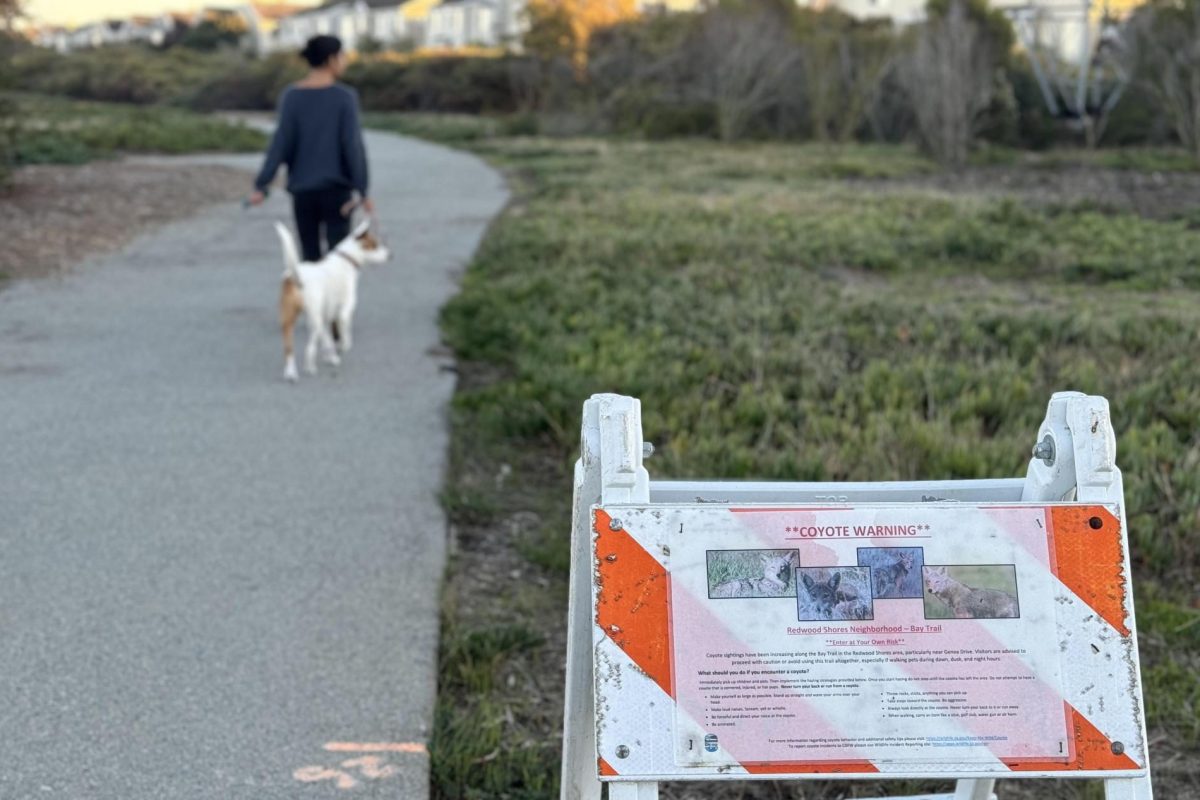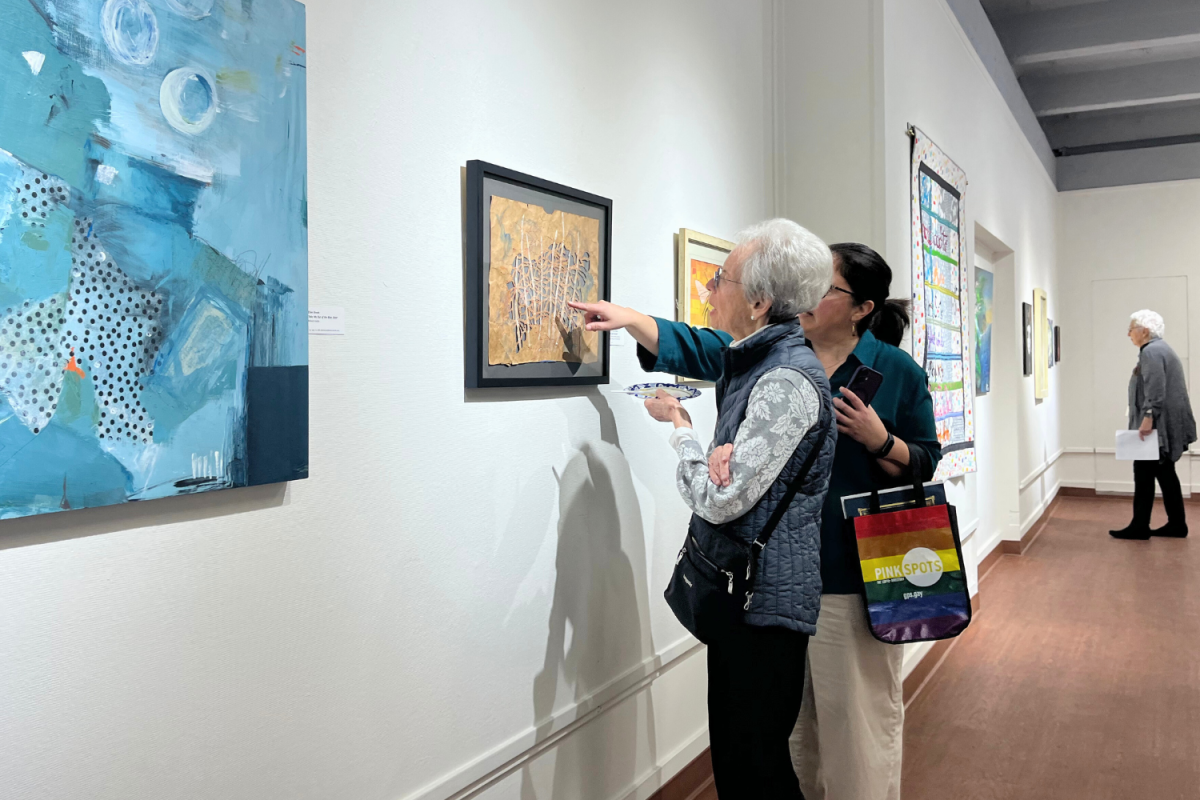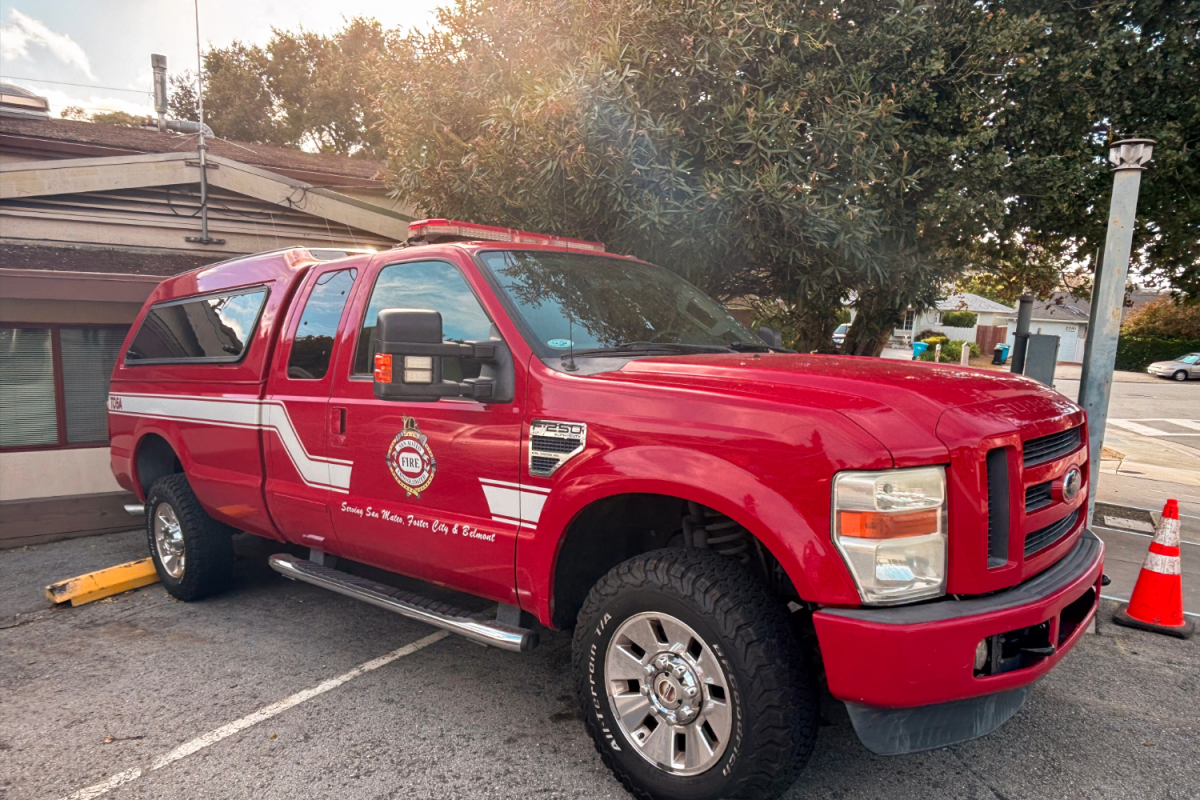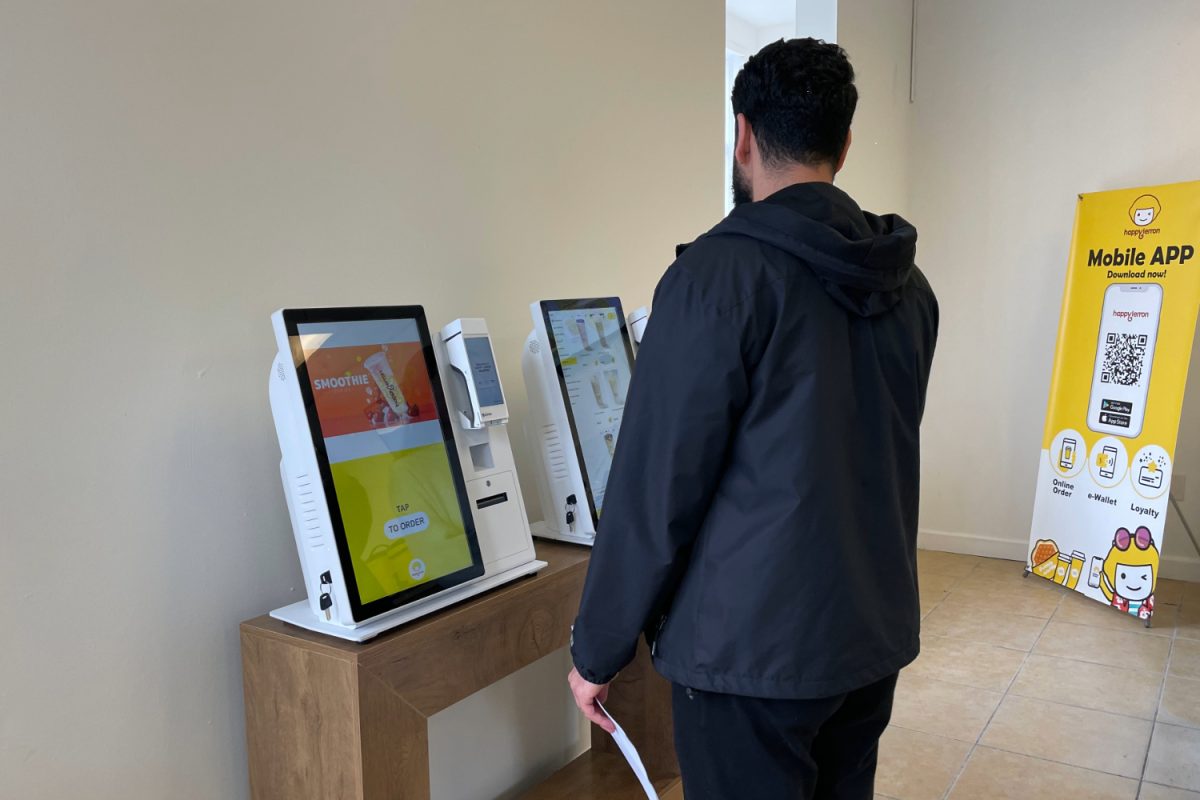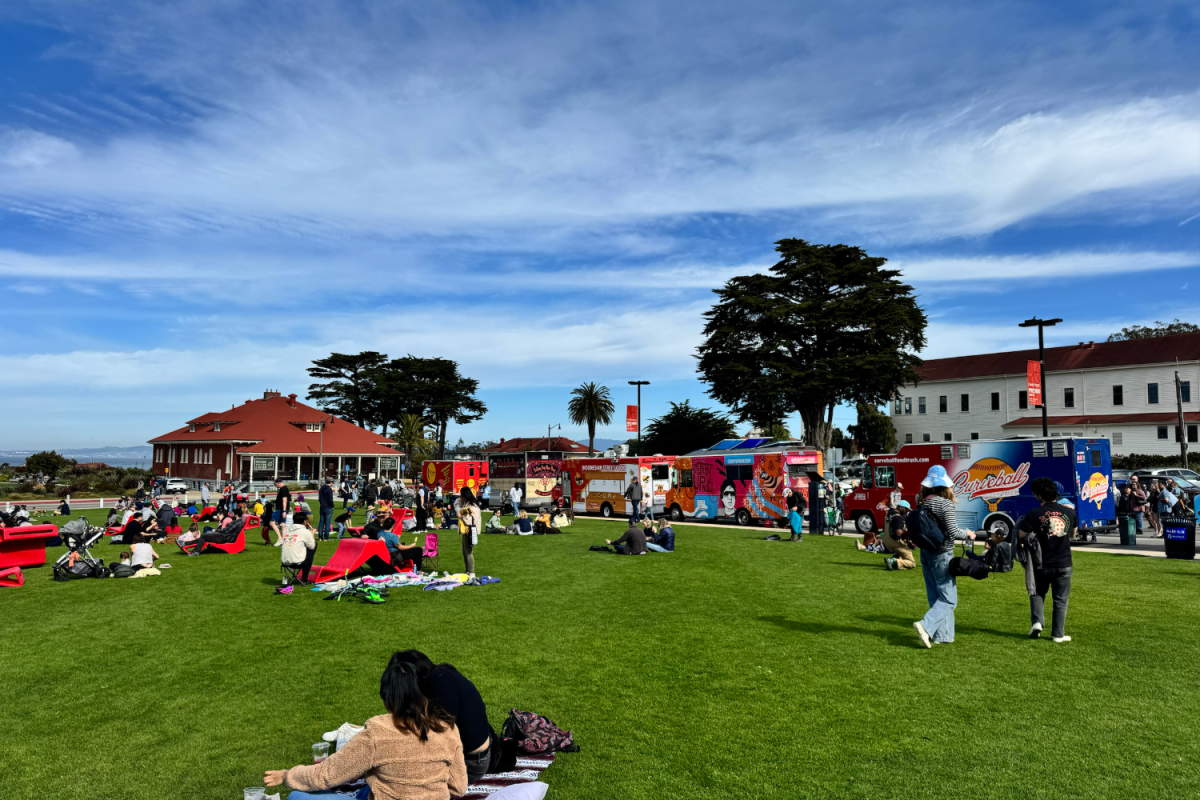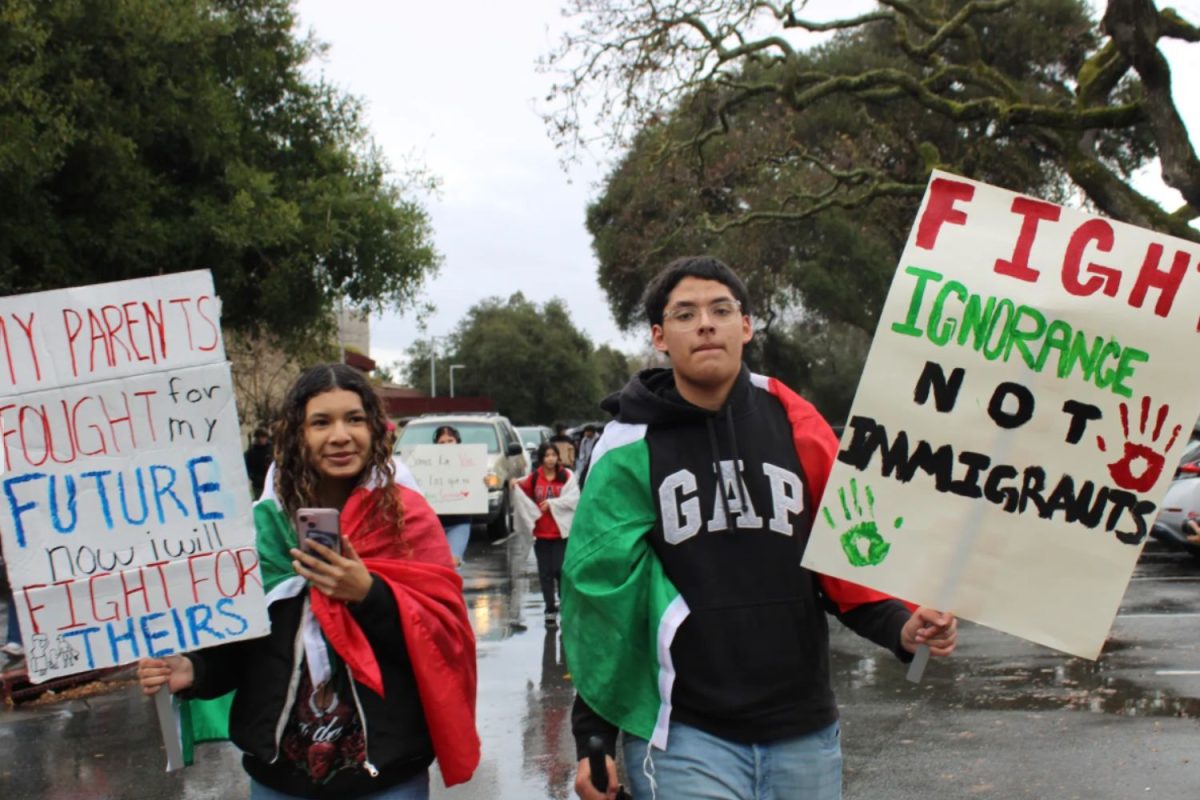The growing coyote population has led Redwood Shores community members to adapt their routines over the last few months.
Over the last several months, these intellectual carnivores have roamed the early morning hours and late nights in growing packs of up to six. What was once a rare sighting has become well-known for community members throughout the Redwood Shores neighborhood.
“Our dog walking routine has changed; we try to avoid dusk hours, and I rarely walk alone at night,” said Redwood Shores community member Martha Tse.
The coyotes are present in hilly areas such as Belmont and San Carlos, but according to CuriOdyssey Director of Wildlife Nikii Finch-Morales, their sudden migration to Redwood Shores is not surprising.
“Offspring are eventually chased out by their mothers to establish new territories, so the coyotes migrating through Redwood Shores may be offspring that relocated due to parental dispersal,” Finch-Morales said.
The Redwood Shores environment is particularly appealing to coyotes. Surrounded by grasslands and water, jackrabbits and squirrels thrive in this climate.
The coyotes may have been fleeing drought and harsh climates, especially posed by increasing wildfires more prone in the hillier regions, their previous home.
According to Finch-Morales, coyotes tend to avoid humans in the wild, but the surrounding neighborhood poses a new risk.
“Once a coyote becomes habituated and is no longer afraid of people, they may try to get close to get food or to interact with larger domestic dogs,” Finch-Morales said.
Martha Tse, in particular, had to face this challenge firsthand while walking her dog, Maple, alone at night.
“We hadn’t had a coyote encounter before, so I wasn’t ever hyper-aware or nervous,” Martha Tse said.
Coyote sightings have been prevalent throughout the neighborhood but have been most frequent in the bay trail behind the Fire Station along with the backside of Redwood Life. However, most sightings have been seen along Genoa Drive in Redwood shores, tucked between housing neighborhoods.
While walking along Shearwater Parkway, Maple stopped suddenly. Turning around, Martha Tse immediately saw a coyote staring at her. Instinctually, she quickly crossed the street, jogging away from the coyote, but to her surprise, the coyote followed close behind in a chase.
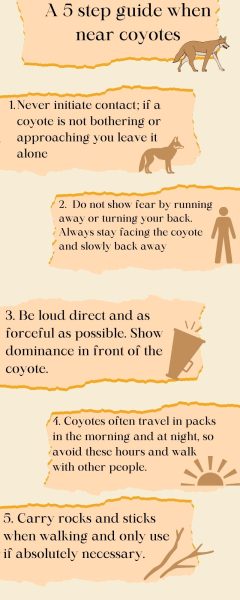
“I started running around in circles in the street, and the coyote got within a foot of Maple, trying to bite her,” Martha Tse said.
Martha Tse managed to run into a neighborhood and scare it with a nearby trash can. This event affected not only her routines but also her dog.
“I think Maple is traumatized by it because she has been super alert at night when we walk in the dark,” Martha Tse said.
In recent months, coyotes have trotted in packs rather than individually. Gabriel Tse, who is in middle school, walks to the nearby bus stop every morning. On one occasion, he recalls witnessing the coyotes.
“There were a couple of girls a few yards away from me, and the coyotes walked in between us and started following the two girls,” Gabriel Tse said.
Although the exact number of coyotes is unknown, the population is steadily growing.
New warning signs block the entrance to trails along Genoa Drive, advising those who come across it to turn around at the posed risk of crossing the coyotes.
The community is on high alert as these encounters happen more frequently, and the coyotes grow more comfortable around people.
“I would behave like all the experts tell you, which is to stand your ground, not run, be loud, and scare them away,” Martha Tse said.

